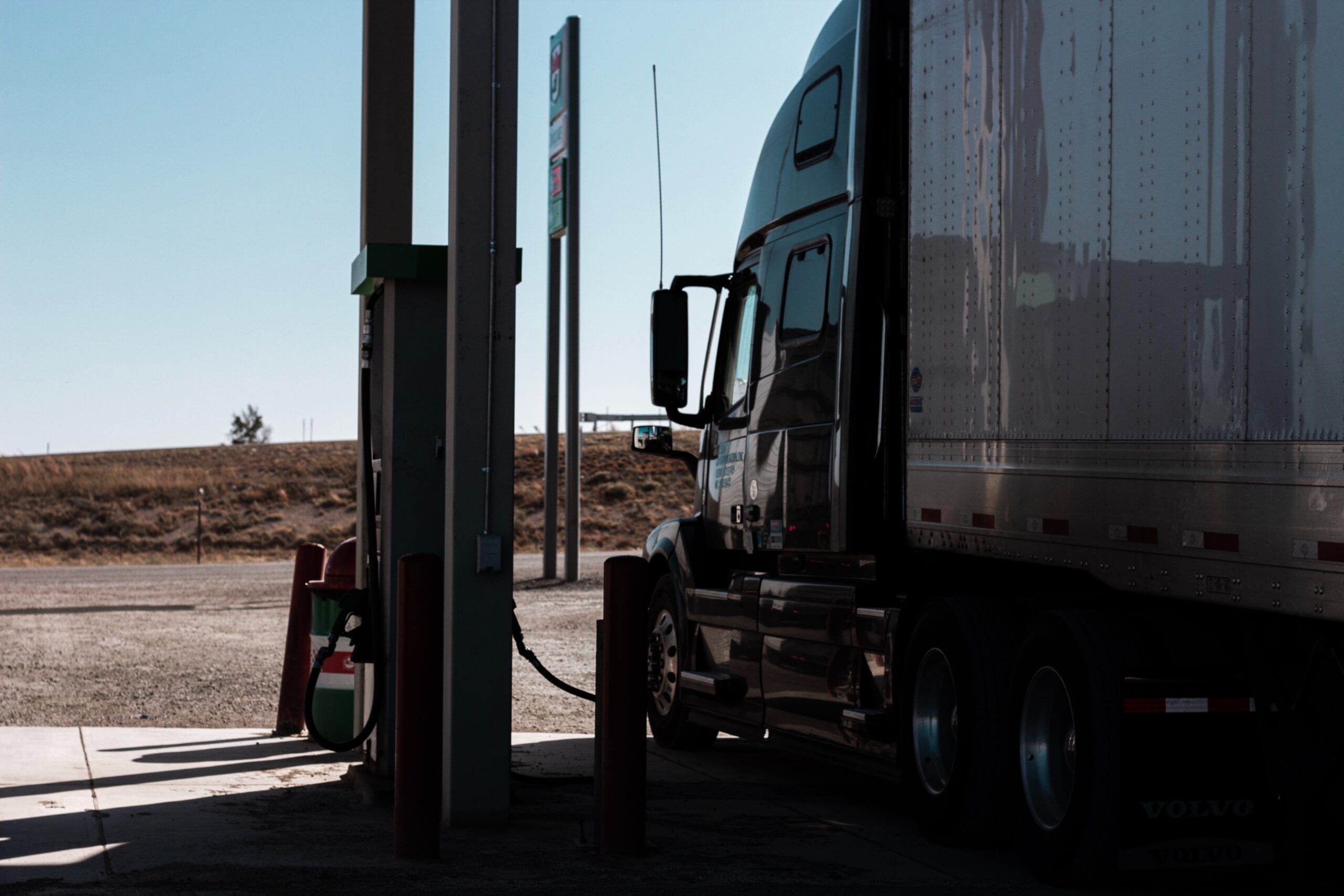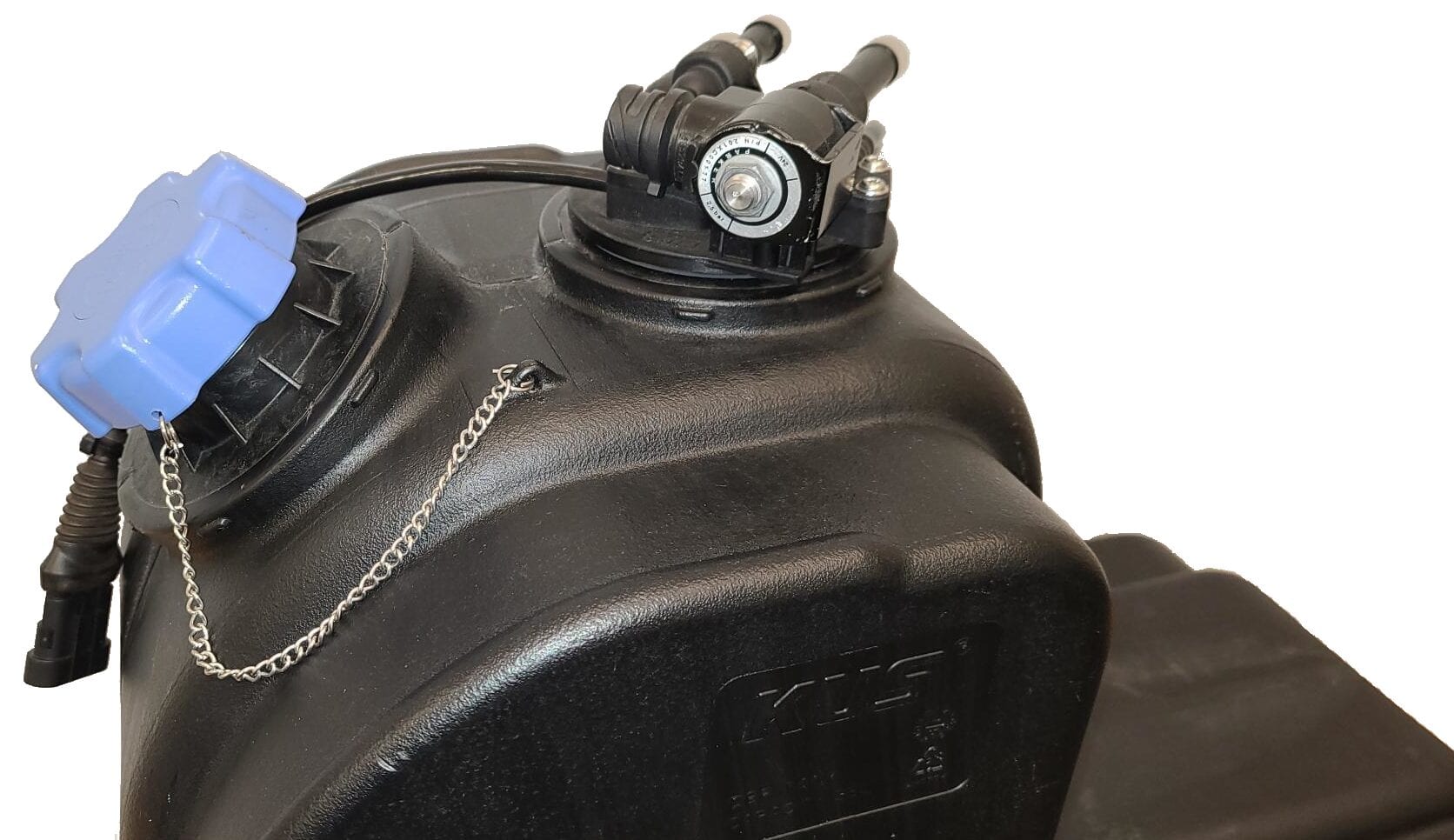
For an introduction to DEF, its uses, why it is required, and the DEF level sender functions such as temperature, level, and concentration, look no further.
What Is Diesel Exhaust Fluid (DEF)?
Diesel Exhaust Fluid, better known as DEF, is a chemical compound known for neutralizing nitrous oxide (NOx) emissions that would otherwise be harmful to the environment and people. Nitrogen oxides contribute to the formation of smog and acid rain, they affect the tropospheric ozone.
DEF is a crucial additive to understand when operating large vehicles and heavy equipment. DEF it is a mixture composed of 67.5% deionized water and 32.5% urea. DEF is sprayed and then spread into the exhaust gas via a mixer before entering the SCR catalyst. As DEF enters the system, it evaporates into ammonia (NH3) and water (H2O), the ammonia (NH3) sticks on the SCR catalyst and binds with the NO and NO2 (NOx) as they pass over the catalyst. Once bound, the NOx will combine with the NH3 to create a chemical reaction resulting in nitrogen 2N2 and water 3H20. The water and nitrogen are then released into the atmosphere through the exhaust system.
Beginning in 2010 the Environmental Protection Agency (EPA) required lower NOx emissions, in response vehicle manufacturers began using DEF systems for all medium and heavy-duty on-road vehicles. In the years to follow, the EPA would expand those measures to include off-road vehicles, generators, and a variety of engines to use DEF. These regulations would result in the lowest recorded levels of NOx in history during an integral period where nitrous oxide levels were reaching all-time highs.
Adblue® DEF
When researching DEF, it is important to understand alternative terminology. DEF is also sold as Adblue®, depending on the supplier, but the two products are exactly the same. Because of this, using Adblue® with any of our DEF level senders or tanks possesses no threat to the integrity of the equipment or to the safe storage of your fluid.
Using & Refilling DEF

As stated before, DEF is typically used in heavy machinery and vehicles. DEF tanks are typically made out of a high strength plastic that is resistive to corrosion. DEF is added to the tank through a nozzle, It can be filled by an DEF jug or by a pump at a station. If you do decide to refill by a DEF jug and it doesn’t include a nozzle, as the case with smaller DEF jugs, a funnel should be used to ensure DEF goes into the tank without spillage.
The nozzle is placed inside of the filler neck on the DEF tank and the DEF jug is then slowly tiled allowing a controlled flow of DEF into the tank. Due to the corrosive nature of DEF, it is important that you do not spill DEF on other vehicle components, if DEF is spilled on those, it is recommended that you wash off the DEF with water as soon as possible. You should not fill the DEF tank higher the max recommended level because it overfilling the tank could damage. Overflowing the tank will not allow for enough expansion area for when the DEF freezes and could potentially cause cracking and leaking of the DEF tank.
While adding DEF into a DEF tank it’s important to ensure no outside contaminants or debris fall into the DEF tank. Not all DEF tanks have a filler neck filter to catch debris or contamination, so it’s important to pay close attention when refilling. Debris entering the tank can cause blockage in the system resulting in your system not being able to inject DEF into your exhaust. Liquid contamination such as adding additional water, fuel, coolant can affect the quality of the DEF and can damage your emissions system. Your DEF sending unit might have a quality sensor that can detect contamination or urea concentration changes.
DEF Sending Unit: Temperature & Quality Sensor
The DEF sending unit integrates both liquid level and temperature management solutions and is made up of two parts, the temperature and quality sensor. The DEF sending unit ensures an accurate reading to the driver regarding the amount of DEF left in the DEF tank
The DEF temperature sensor is integral to the use of DEF, because they alert machine and vehicle operators when their DEF tank reaches a critical temperature level. While the optimal storing temperature for DEF is 77 degrees Fahrenheit, our tanks do accommodate expansion if their contents become frozen. Before freezing temperatures are reached, however, our DEF tank sensors will alert you of the temperature change.
The DEF quality sensor has been common and is often coupled with a DEF sending unit as emission laws and regulations become increasingly stringent. The DEF quality sensor is used to accurately monitor the concentration and quality of DEF in the DEF tank as well as if there are any contaminants or debris in the DEF tank. If there is any deviation in the concentration of DEF that could potentially harm the vehicle and SCR system, the DEF quality sensor will alert the driver. There are several quality sensors to choose from depending on your application solution and climate.
By engineering, designing, and validating DEF Tanks and Level Sensors simultaneously, KUS provides our customers with comprehensive DEF accessories that are guaranteed to be compatible with each other.
To learn more about our DEF tank temperature sensors, check out our selection here.
DEF Tanks Assemblies

DEF tanks are also important to understand when using DEF. Produced through a blow molding or rotational molding process out of HDPE material, DEF tanks store DEF prior to use. DEF tanks must accommodate potentially harsh environments and incorporate safety measures. The DEF tank is typically adjacent to the diesel tank but it can also be located under the hood. DEF tanks are denoted by their light blue DEF tank caps. Your vehicle’s handbook should cover the usage of DEF as it pertains to adding DEF into the DEF tank; it should also have a section regarding DEF safety and proper uses to ensure the DEF performs adequately.
KUS designs, engineers, and manufactures DEF Tank Assemblies not only based on customer’s needs and requirements, but also constructs every DEF tank according to ISO 22201 standards. KUS offers a portfolio of standard tank shape and volumes, and can also work with customers to their specifications.
Learn more about our selection of DEF tanks here.
Let KUS Be Your DEF Sending Unit and Tank Assembly Provider
KUS provides DEF accessories for both trucks and heavy equipment. From DEF level senders to tank assemblies, our expert craftsmanship ensures that you are always able to operate safely and efficiently when operating machines that utilize DEF. Whether you are unsure which product will best suit your needs, or want to learn more about our manufacturing process, KUS has the skill and expertise to make recommendations and has already done so for many of the world’s leading OEMs.
